In software development, a structured approach is central to successfully completing projects. In particular, managing versions within Jira plays a crucial role. This guide will teach you how to effectively utilize versions in Jira to organize your development work and keep track of progress.
Key Insights
- Versions in Jira help you track the progress of tasks and User Stories.
- Creating versions should be done strategically to facilitate the assignment of User Stories.
- A clear structuring in versions simplifies the planning and execution of updates.
Step-by-Step Guide
To create and manage versions in Jira, follow these steps:
To be able to use the functionality of versions in Jira, you must ensure that the Releases are activated. Navigate to the project settings and activate the respective options. You can find the setting under the "Project" menu and then "Settings". If you do not activate the Releases, the corresponding field will not be displayed.
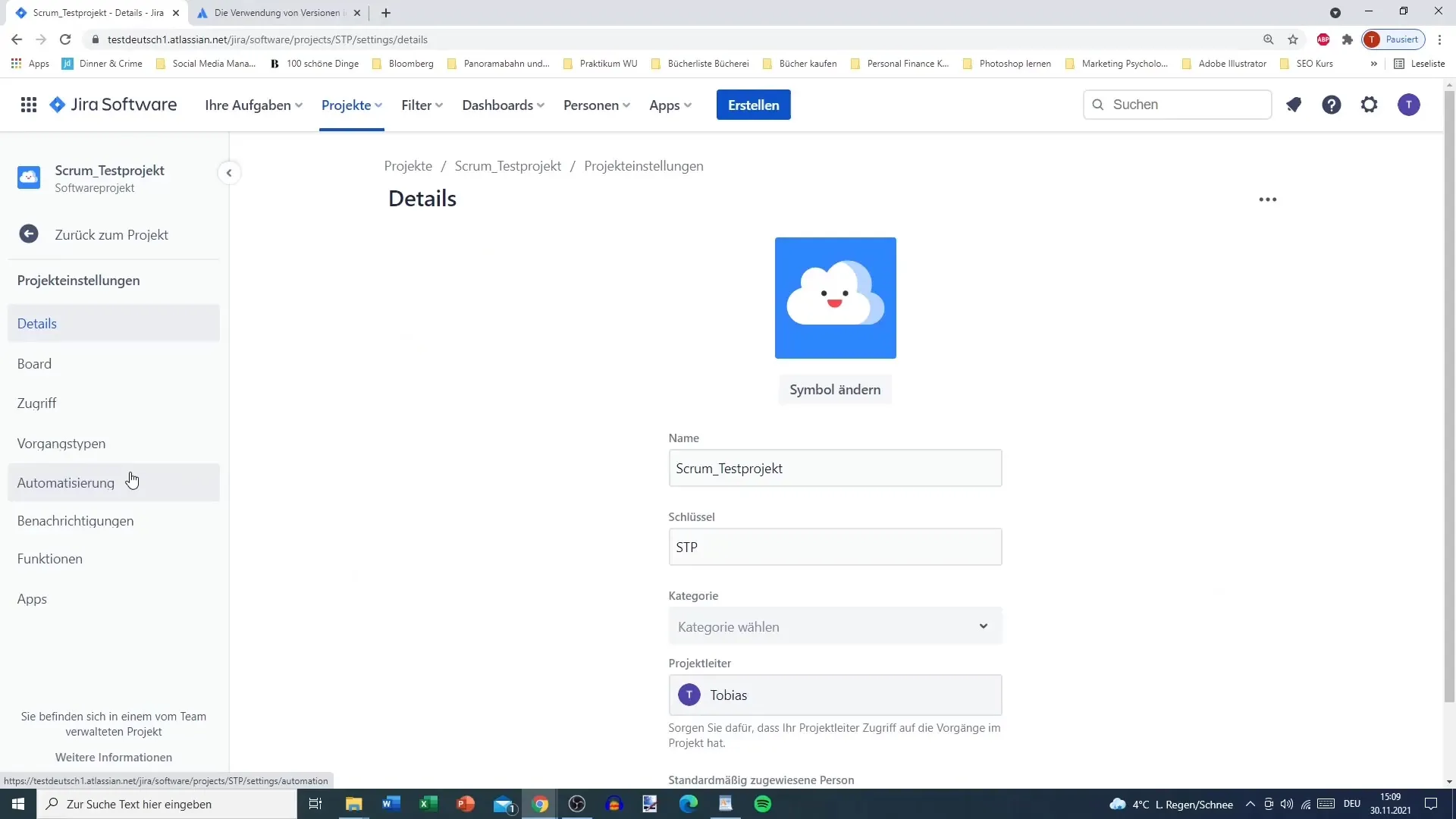
Once the Releases are activated, you can access the versions. This is done through the "Versions" menu. Here, you need to open a panel to create a new version. Typical labels for versions could be 1.0, 1.1, or 1.1.1. Also, consider which data is meaningful for the start and release. For example, you can set today's date as the start date and a future date for the release.
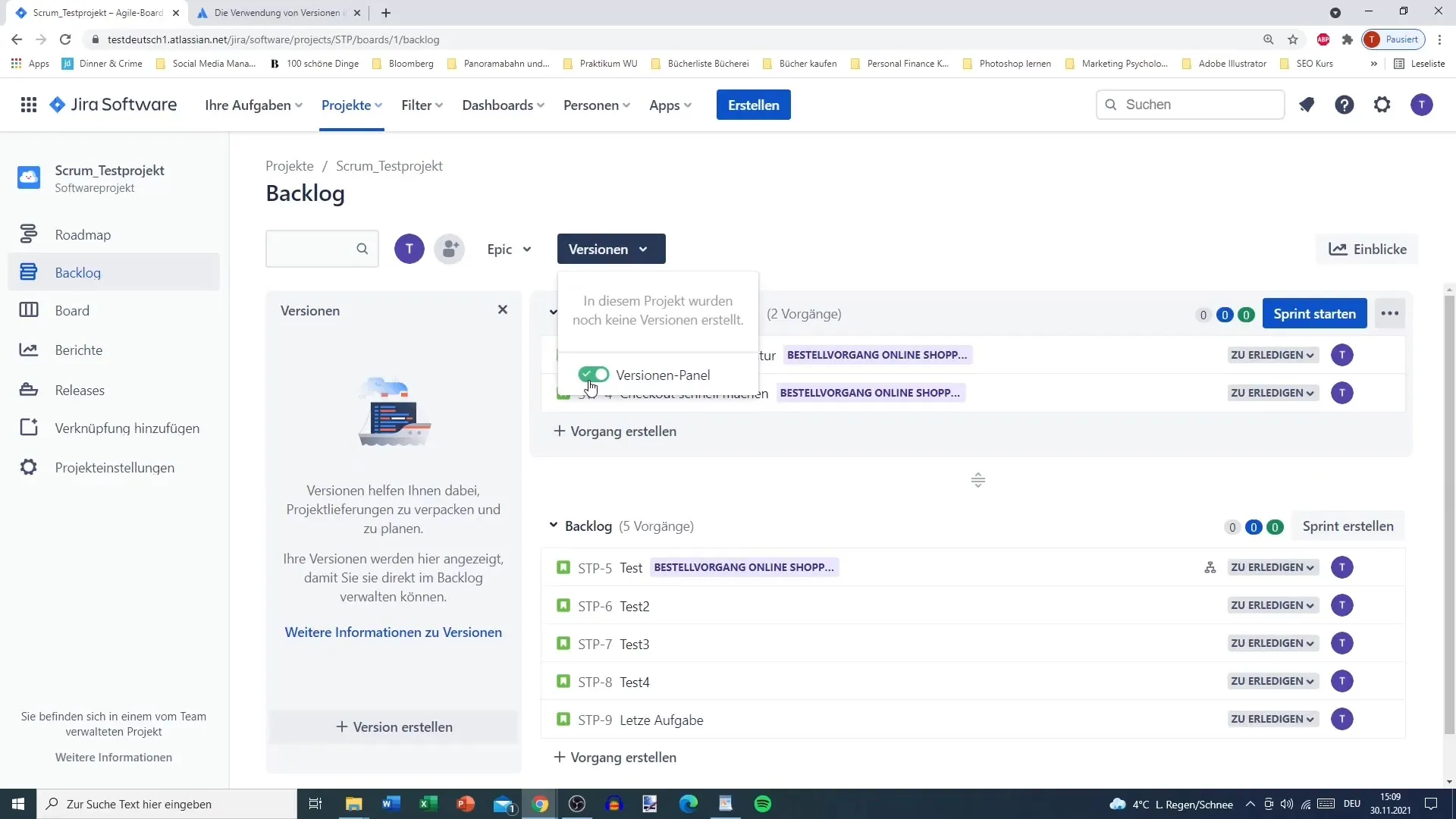
After entering all necessary information, click on "Save". Your new version is now created, and you can work on categorizing various User Stories into this version. For example, a first version 1.0 could be planned to be created, followed by a 1.1 containing some updates or improvements.
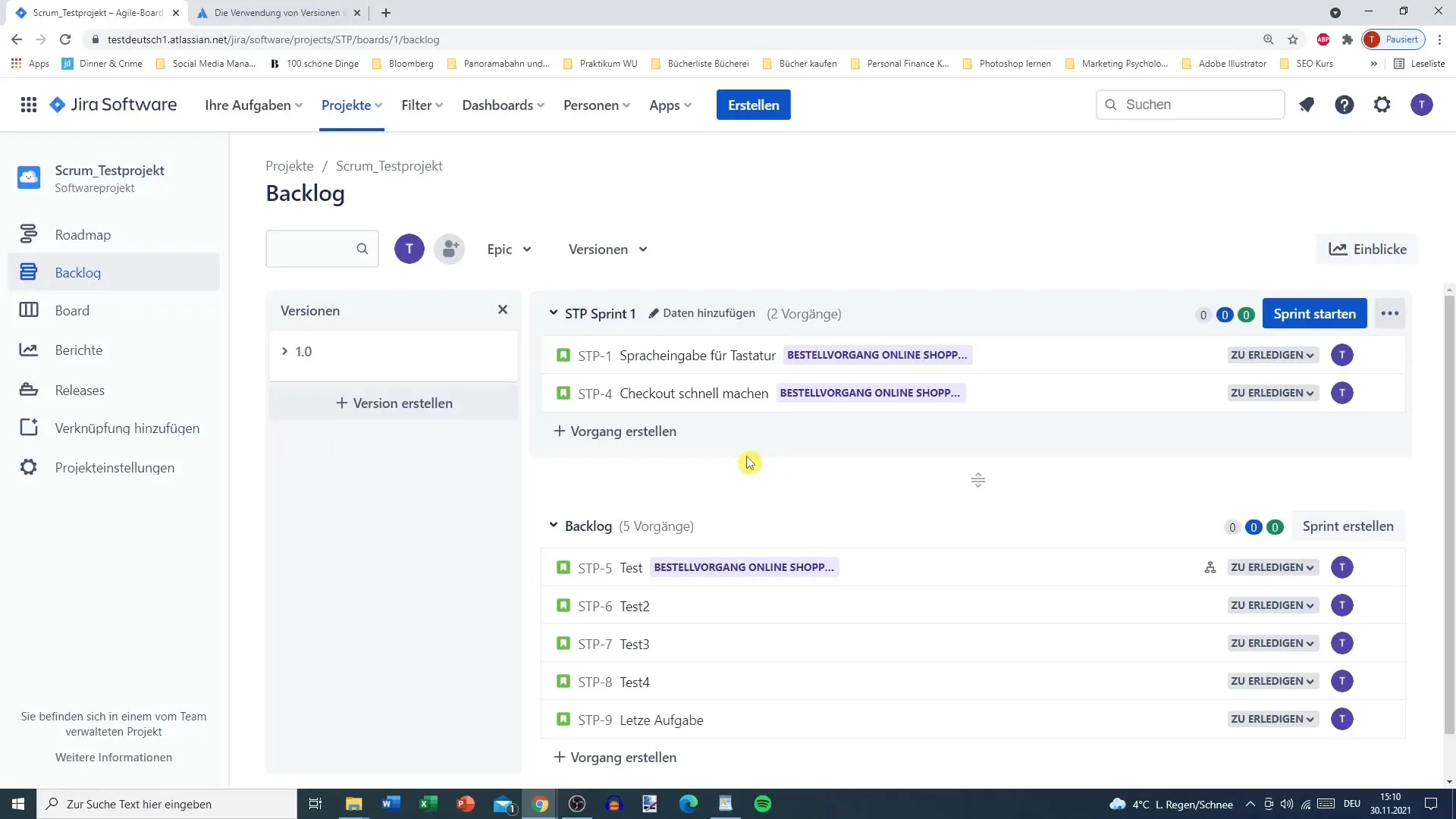
To sort the User Stories for your versions, you can filter based on various criteria such as ratings or comments to achieve precise organization. This helps you keep track of the most important tasks and prioritize as needed. For example, if the completion is scheduled for December 30th, you can assign all available stories accordingly.
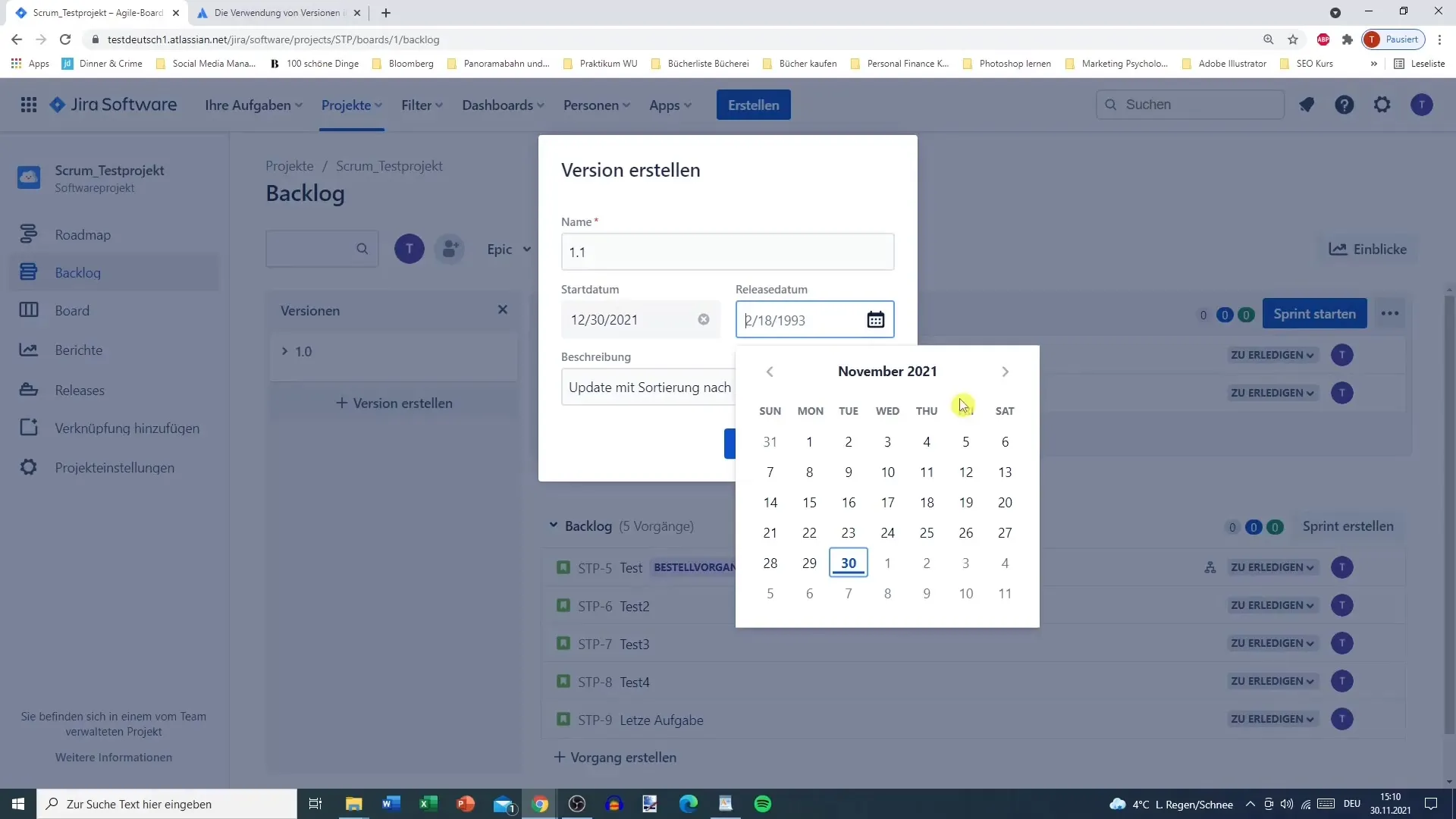
Now, it's time to assign your User Stories to the respective version. You can do this by selecting the desired stories and moving them to version 1.0. Repeat this process for all User Stories you wish to include in this version. This can be somewhat time-consuming, so it's sensible to create the version first and then add the associated User Stories.
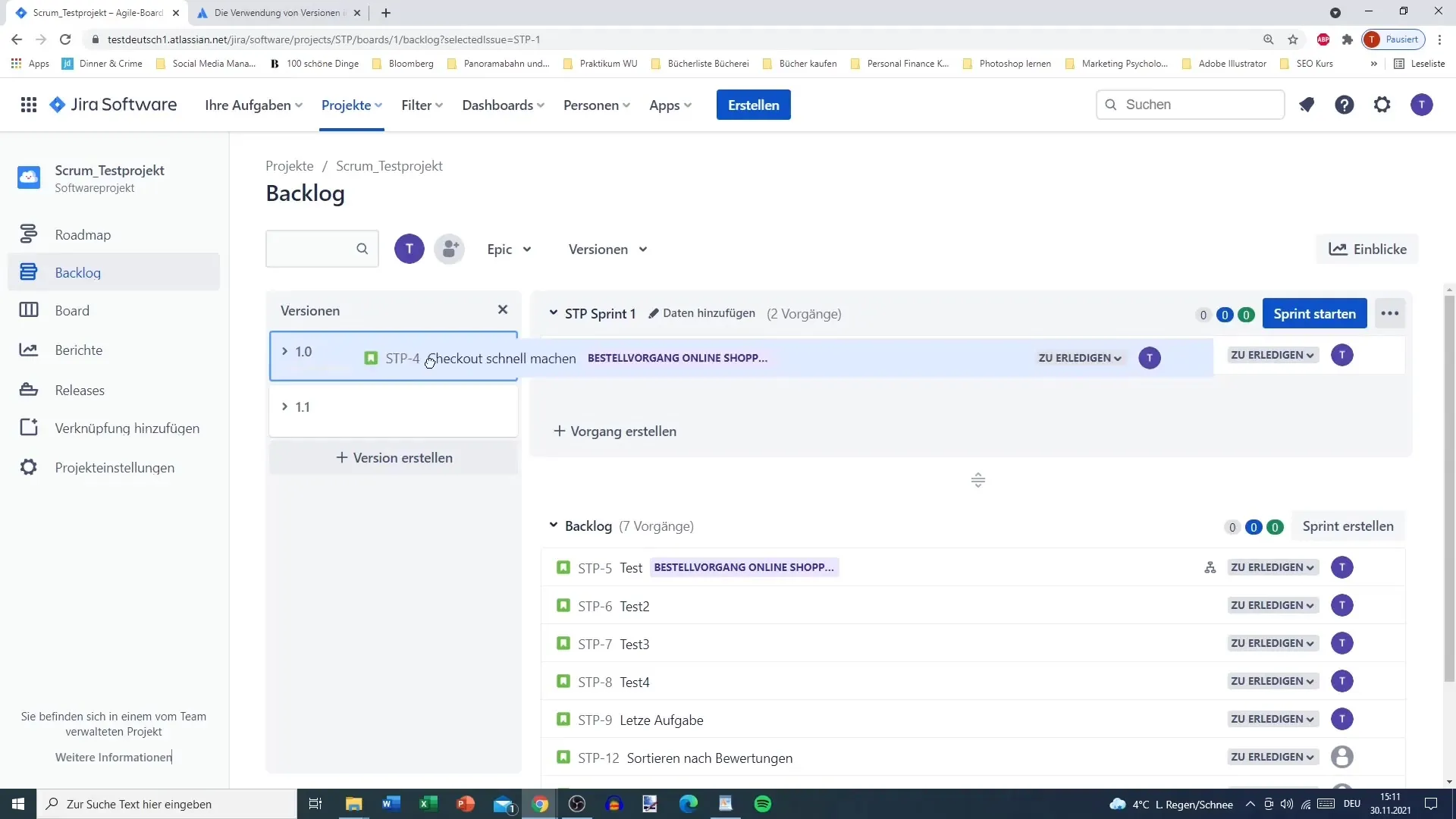
When you select version 1.0, you will see all User Stories assigned to that version. The selection process for version 1.1 will show you only the stories relevant for the next update. This is particularly useful when planning multiple releases, as it allows for clear and organized task allocation.

A clearly structured workflow is crucial for the effectiveness of your work. Ensure that when creating versions, you first create a new version before creating and assigning the corresponding User Stories. This approach saves time and reduces the effort required for later adjustments.
Another point to consider is Epics. When working with Epics, it's important to create the Epics first and then the User Stories to avoid an unmanageable amount of work. Failing to do so and subsequently assign User Stories to Epics can be very cumbersome. Therefore, it's advisable to always create the necessary structures before starting the actual work.
Summary
In this guide, you have learned how to efficiently create and manage versions in Jira. The clear structuring and assignment of User Stories to versions help you keep track of the progress of your project. Additionally, planning updates is simplified, which is crucial for the long-term success of your software development.
Frequently Asked Questions
How do I activate the Releases in Jira?Navigate to the project settings and activate the Releases under the "Settings" menu.
How do I name my versions sensibly?Use clear designations like 1.0, 1.1, 1.1.1 to clearly identify different development stages.
Why should I assign User Stories to versions first and then to epics?This facilitates organization and prevents significant effort in retrospective assignment.
What are the advantages of using versions in Jira?Versions facilitate the planning, organization, and traceability of User Stories and tasks in a project.
What happens if I do not activate versions in Jira?If you do not activate the releases, the corresponding field for versions will not be displayed, limiting the usability.


